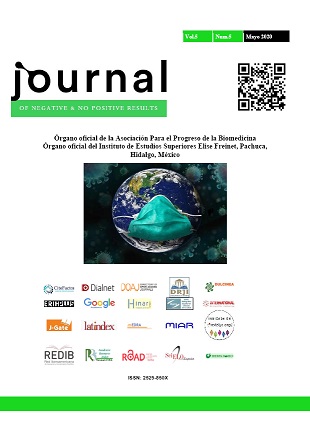Fluoride levels in toothpaste and mouthwashes
DOI:
https://doi.org/10.19230/jonnpr.3326Keywords:
Fluoride, dentifrices, mouthwashes, potentiometry, toxic riskAbstract
Introduction. The use of dentifrices and mouthwashes or mouthwashes that have fluoride in their composition has been extended since it has been shown that this element has a high activity against cariogenic bacteria. However, excessive intake of any of these products can cause poisoning that leads to various long-term pathologies.
Objectives. The objective of this study is to determine the fluoride content of dental products (dentifrices and mouthwashes) to assess whether there is any type of risk by accidentally ingesting large amounts of these in certain population groups and comparing the experimental levels with those declared in the labelling.
Material and methods. A total of 117 samples of dental products have been analyzed by potentiometry with fluoride selective ion electrode.
Results and discussion. The highest concentration of fluoride (18412±0.009 mg/kg) has been recorded in the Vitis® junior tutti frutti flavor toothpaste. The highest level of fluoride found in mouthwashes (2703±38.4 mg/L) has been registered under the Lacer® Oros brand.
Conclusions. There is no risk if brushing is done correctly and, in the case of children, in a supervised way to avoid accidental ingestion. However, if produced, very high amounts of these products would be needed to trigger a toxic effect in the short and long term.
Downloads
References
Ariza Villanueva C, Cabrera Pérez R, Caro Norabuena B, Delgado Llancari R, Gamarra Morales H, Huanca Sánchez J et al. Posología y presentación de los fluoruros tópicos en nuestro medio-Fluorosis dental. Universidad Nacional mayor de San Marcos. 2009.
Nicholson JW, Czarnecka B. Fluoride in dentistry and dental restoratives. En: Tressaud A, Haufe G, editores. Edición 1. Elsevier B.V.: Hungría. 2008.
Jáudenes Marrero JR, Hardisson de la Torre A, Gutiérrez Fernández AJ, Rubio Armendáriz C, Revert Girones C. Evaluación del riesgo tóxico por la presencia de fluoruro en aguas de bebida envasada consumidas en Canarias. Nutr. Hosp. 2015; 32(5):2261-2268.
Barbería E, Cárdenas D, Suárez M, Maroto M. Fluoruros tópicos: Revisión sobre su toxicidad. Rev Estomatol Herediana. 2005;15(1): 86 – 92
Uribe S, González S, Mariño R, Ortiz ME. Revisión sistemática sobre el uso de pastas dentales fluoradas en preescolares. [Internet]. 2014. [consultado 23 abril 2018]. Disponible en: https://www.researchgate.net/publication/267098235_Revision_sistematica_sobre_el_uso_de_pastas_dentales_flu oradas_en_preescolares_-_Systematic_review_on_the_use_of_fluoride_toothpastes_in_preschool_children
Gómez Santos G, Gómez Santos D, Martín Delgado M. Flúor y fluorosis dental. Pautas para el consumo de bebida en Canarias. 1º edición. Santa cruz de Tenerife: Dirección general de SP. Servicio Canario de la Salud. 2002.
Rivera S, Godorecci S, Borgel L, Diaz E, Fruchs T, Martin MI. Flúor: potenciales efectos adversos. Rev. Chll. Pediatr. 1993; 64 (4); 278-283.
Protocolo para el uso del flúor en niños. Documento de consenso de la European Academic of Paediatric dentistry (EAPD) con la sociedad española de odontopediatría [internet]. 2008 [Consultado el 23 de abril de 2018]. Disponible en: http://www.odontologiapediatrica.com/protocolo_de_la_academia_europea_consenso_europeo
Báez-Quintero LC, Botazzo-Delbem AC, Nagata ME, Pessan JP. Concentración de flúor en cremas dentales y enjuagues bucales para niños vendidos en Bogotá, Colombia. Rev. Nac. Odontol. 2016; 23(12):41-48.
González Sacramento N, Rubio Armendáriz C, Gutiérrez Fernández AJ, Luis González G, Hardisson de la Torre A, Revert Girones C. El agua de consumo como fuente de exposición crónica a fluoruro en Tenerife; evaluación del riesgo. Nutr. Hosp. 2015;31(4):1787-1794
Prevención de la fluorosis dental. Programa de Salud Oral. Servicio de Promoción de la Salud. 3-2-2010. Disponible en: http://www3.gobiernodecanarias.org/sanidad/scs/content/b0aaafe5-5d05-11df-8125-5700e6e02e85/PrevencionDeLaFluorosisDental.pdf
Serra Majem L, Cuenca Sala E. Dieta, flúor y caries. En: Parras A, coordinador. Edición 1. Masson: España; 1995. p. 280-286.
Gomez-Santos G, González-Sierra MA, Vázquez-García-Machiñena J. Evolution of caries and fluorosis in schoolchildren of the Canary Island (spain): 1991, 1998, 2006. Med. Oral. Patol. Oral. Cir. Bucal. 2008;13(9): E599- 608
Byeon SM, Lee MH, Bae TS. The effect of different fluoride application methods on the remineralization of initial carious lesions. Restor. Dent. Endod. 2016; 41(2):121-9.
Recomendaciones: El flúor [Internet]. Colegio profesional de higienistas de Madrid. 2016 [Consultado 13 abril 2018]. Disponible en: http://www.colegiohigienistasmadrid.org/upload/fluoruros-2%20copia.pdf
Published
Issue
Section
License
All accepted originals remain the property of JONNPR. In the event of publication, the authors exclusively transfer their rights of reproduction, distribution, translation and public communication (by any sound, audiovisual or electronic medium or format) of their work. To do so, the authors shall sign a letter transferring these rights when sending the paper via the online manuscript management system.
The articles published in the journal are freely used under the terms of the Creative Commons BY NC SA license, therefore.
You are free to:
Share — copy and redistribute the material in any medium or format
Adapt — remix, transform, and build upon the material
The licensor cannot revoke these freedoms as long as you follow the license terms.
Under the following terms:
Attribution — You must give appropriate credit, provide a link to the license, and indicate if changes were made. You may do so in any reasonable manner, but not in any way that suggests the licensor endorses you or your use.
NonCommercial — You may not use the material for commercial purposes.
ShareAlike — If you remix, transform, or build upon the material, you must distribute your contributions under the same license as the original.
No additional restrictions — You may not apply legal terms or technological measures that legally restrict others from doing anything the license permits.

This work is licensed under a Creative Commons Attribution-NonCommercial-ShareAlike 4.0 International License

























